Back
News
Media Requests
All requests for information, interviews, or to conduct media business on site anywhere on airport property, both for routine and for breaking news, should be directed to the CVG Airport media team. For inquiries or requests of a timely nature, please call the media line at 859-767-6397.
 Nov 30, 2020
Nov 30, 2020Intelligent CIO: Technology to the rescue: How the aviation sector is fighting back against COVID-19
Intelligent CIO / Mark Bowen / November 10, 2020_With the aviation industry being one of the sectors most impacted by the COVID-19 pandemic, Brian Cobb, Chief Innovation Officer at Cincinnati/Northern Kentucky International Airport and one of the speakers at [Cybersecurity in Aviation](https://www.cybersec.aero/), exclusively tells us how the industry is utilizing technology to put itself back on the road to recovery._How important is the use of data to the aviation industry’s fight back against COVID-19?Using the expression, ‘Cash is King’, then I contend like others, ‘Data is Gold’. We collectively have vast amounts of unmined data at our fingertips while generating more billions of bits of data each and every day. Refined data through Artificial Intelligence, Deep Learning across multiple industries and generating predictive analytics from the same will continue to accelerate the pace by which we do business.Industries and businesses who embrace data mining will learn to adapt to market cycle indicators and amply be prepared to moderate dramatic events. COVID-19 is an ideal case study.While the transportation industry understood that a pandemic was feasible, it is fair to say that the vast majority of my global colleagues never thought it would happen in our lifetime. But here we are. While many around the world are focused on the ‘silver bullet solution’, others are looking to what we can learn today to prevent similar spread in the future.Imagine public venues such as malls, arenas, ports, etc. using networked solutions looking for symptomatic concerns without fear of personally identifiable biometrics. If a community trends towards risk level, could public health officials work with transportation to effectively restrict travel beyond regional limits?Cities and countries are doing this today, but it’s on a macro-level and oftentimes well beyond the beginning of the upward trend. Some number of citizens have likely traveled by the time lockdowns are in effect.Stopping the spread is too late. Imagine if this ‘networked approach’ were in place enabling public health and transport officials to affect lockdowns based on micro-level data and predictive analytics.Perhaps we could have contained an epidemic before blossoming to the global pandemic we are experiencing today. Also imagine the narrative if such an approach were effective in stopping the spread and restoring economic stability. That’s an effective use of data, prediction modeling, Deep Learning, and demonstrable action to protect the industry and others like it going forward. The thermographic gateway system you use from Fazing Labs allows you to use a real-time system of dashboard where you can monitor real-time for alerts. What data are these alerts supplying you with and how do you use it?It’s important that we first acknowledge that detecting an abnormal core temperature is not indicative of COVID-19 as some do not exhibit an abnormally high temperature while others may have a higher core temperature beyond their control (e.g. medication side effect).That said, we recognize that core temperature monitoring may provide insights to the community concern trending mentioned above. With Fazing Labs, we’re modeling the ability to protect the identification of the ‘target’ until such time that a reading is abnormal.Should that occur, our intention is to use our regular CCTV capabilities to identify the individual and approach them in a respectful way. This is opposite of how airports perform security screening today where 100% of the population is processed as being a security risk until cleared.Ideally, this approach to temperature checks provides a more humanistic, considerate and timely approach to not interrupting the flow or worse, inadvertently create queues that compromise social distancing.In consideration that temperature is not a confirmation of COVID-19, the reasonable expectation would be for that guest to be escorted to a secondary screening using an approved rapid test method.As the primary (temperature) and secondary (rapid test) data points are gathered, this would be mapped against the total population traveling over the same time. The result is a trend report that ideally can assist public health agencies and transportation officials discern models of concern and determination of allowing mass travel or implement moderate restrictions to stem or stop the spread. Can you use this data for contact tracing at a later date? If so, how does this process work?We have other systems in place that support contract tracing should that become a requirement. This is done through sensor technology currently at our security checkpoint with the intent of deploying sensors from roadway to gateway (boarding gate).The sensor tech provides capture of mac addresses for any Bluetooth or Wi-Fi enabled device. While we don’t know who the individual is that’s carrying the device, we do know that that device travelled throughout our facilities and path that individual took while on-premise.Our leap to leverage this data for the greater good is to provide this to independent and approved contract trace organizations (e.g. Apple, Google or similar) in the interest of data privacy concerns.Should the individual confirm via their contract trace app, our data would enable cross comparison of their device mac address(es) against all other devices that traversed our facility over a particular period of time.It’s important to note that the CDC has recently changed its position about how long two or more individuals need to be in close proximity to be deemed ‘in contact’. However, we also are seeing study results that suggest the SARS CoV strain can survive on some surfaces for days, possibly weeks.If this is accurate, then we have a responsibility to be looking beyond just individuals in close proximity to a wider audience of those that may have followed the same path, touched the same surfaces or used the same amenities. There are tremendous implications to effective cleaning and sterilization and taking adequate precautions on behalf of the entire traveling population. While that may seem daunting, it is perhaps an equal justification for why community networked solutions could and should play a larger part than what’s occurring today.How has the data allowed you to contain the spread of disease while creating a less negative economic impact?We can only speculate at this point given the ever-changing conditions by our global public health organizations. I do think it’s fair to suggest that we’ve used data effectively in our decision making.One of our best use cases are the IoT (Internet of things) sensors that we placed in all of our public restrooms pre-Covid. The sensor deployment was purpose driven for better staff efficiency while providing a greater, positive impact of exceptionally clean restrooms for our customers.Our sensors have predetermined thresholds established and actively count the number of visits in and out of each female and male restroom. As the threshold nears for a particular restroom, our nearest male or female housekeeper depending on the room type is alerted that the restroom needs servicing.This is done through cloud-based computing and notifications sent to a wearable device (wrist watch) that each housekeeper is issued. We’ve moved well beyond the traditional ‘pen and paper note card’ of when the restroom was last serviced. Our guests are less interested in seeing someone’s initials on a piece of paper and are far more expectant of superior cleanliness. Add the COVID-19 concerns of today and our customer expectations have likely increased exponentially.As COVID-19 began to impact our airport passenger activity, we immediately used data from the IoT restroom devices to determine which restrooms to close temporarily or for an extended period of time.This allowed for the best, most efficient use of staff’s time vs. attempting intensive cleaning throughout all restrooms. It gave them a fighting chance to keep up with the newer expectations.Pre-Covid, closing restrooms would have been unheard of. However, with effective signage and customer guidance, our traveling guests had a greater appreciation for why we were actively closing/opening restrooms in the interest of quality, health and safety. It’s gestures like these that will support optics and confidence building for the public to return to air travel, demonstrating in real time that aviation is acting on the health and welfare of our guests at all times going forward.[Full article here](https://www.intelligentcio.com/north-america/2020/11/10/technology-to-the-rescue-how-the-aviation-sector-is-fighting-back-against-covid-19/)Read more Nov 24, 2020
Nov 24, 2020Local 12: Tri-State travelers feel safe, despite CDC recommendations
EBRON, Ky. (WKRC) – The CDC urges against travel for Thanksgiving, yet the Cincinnati-Northern Kentucky International Airport expects November and December to be its busiest months since the pandemic started. Many travelers feel safe flying in and out of the Tri-State.A recent surge in COVID-19 cases has the CDC warning about traveling for Thanksgiving, but that's not stopping Eddie Wilbur from travel to the Tri-State area.“I haven’t been home in like three or four years. I wanted to be home for the holidays,” said Wilbur.AAA Spokesperson Jenifer Moore said 50 million people are expected to travel for the holiday this year. That's a drop from 55 million in 2019.“We actually expect the number of holiday travelers to be lower than forecasted for 2020,” said Moore.During the holiday season, travelers at the Cincinnati-Northern Kentucky International Airport will see more frequent cleaning and disinfecting. Plexiglass was installed in several areas and double the number of hand sanitizer stations were added to the airport.Neil Ferrao his wife, Heather Amastutz Ferrao, arrived from Kenya.“The airlines did a really good job of trying to practice the safety precautions,” said Ferrao.The couple was hesitant to travel, but both took COVID-19 tests before arriving.“We went back-and-forth a number of times, but we have already missed two trips this year to see my parents,” said Amastutz Ferrao.Frank D'Ambra was headed to Boston.“I’m a little bit nervous, but my family comes first,” he said.[Full store with video here](https://local12.com/news/local/tri-state-travelers-feel-safe-despite-cdc-recommendations)Read more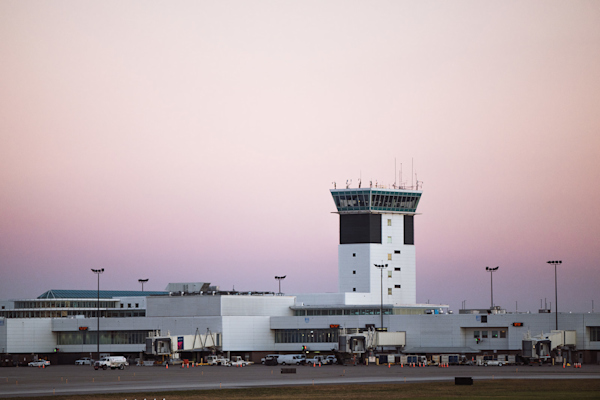 Nov 24, 2020
Nov 24, 2020Kathrine Nero talks Holiday Travel with CVG Customer Experience
Kathrine Nero was live at CVG today, November 24, 2020 to talk holiday travel with Adam Kressler and Wendi Orlando from CVG Customer Experience. Interview was aired live on Facebook - [Click Here to view](https://www.facebook.com/Enquirer/videos/2670408169866458).Read more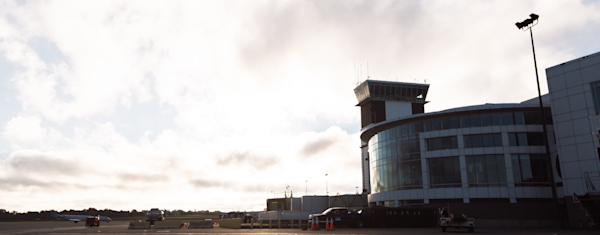 Nov 24, 2020
Nov 24, 2020Fox 19: CVG officials increase safety precautions ahead of holiday passenger bump
WXIX-TV 19 News / Andrea Medina / November 23, 2020BOONE COUNTY, Ky. (FOX19) - Despite a CDC warning against Thanksgiving travel, many are still opting to fly for the holiday.“The holidays are always a special time for me,” Stephanie Theobold said.She and her dog recently got away, trading Ohio’s weather for the Florida sunshine. She says it’s difficult to balance safety with the desire to see her family in Mason for the holiday.“I’ll survive for my family,” Theobold said, adding she’ll practice social distancing and good hygiene during the holiday. “It’s a special time to be with them.”CVG airport officials say the airport is processing around 5,000 travelers per day this week. The number is historically low for the airport, but it could tick up further as the holiday approaches. “We know it’s going to be busy, so Monday, Tuesday and Wednesday are going to be about the same traffic-wise, and Sunday and Monday are usually busier days,” airport official Mindy Kershner said. “Usually they’re traveling home or going back to Cincinnati.”\ [Meet the robot that keeps CVG clean as passengers return to gates](https://www.fox19.com/2020/05/19/meet-robot-helping-keep-cvg-clean-passengers-return/)In order to help flyers feel more comfortable and confident when arriving at the airport, changes have been made.“Trying new products and enhancing our cleaning regimens are all measures that we’ve taken to make people feel comfortable and confident,” Kershner said.The TSA is also allowing one oversized liquid hand sanitizer, up to 12 oz per passenger in carryon bags.Passengers can bring hand wipes through check points as well.Airlines are taking measures to prevent spread of COVID-19 as well.“They’re cleaning the aircraft,” Kershner said. “They’re doing a lot of cleaning and wiping down the plane.”[Full story and video here](https://www.fox19.com/2020/11/23/cvg-officials-offer-steps-flying-safely-over-thanksgiving-holiday/)Read more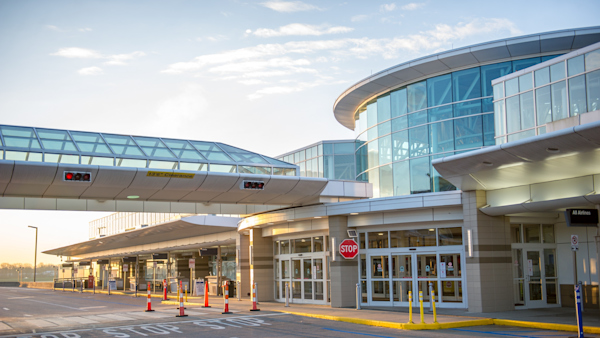 Nov 24, 2020
Nov 24, 2020River City News: CVG expects Nov, Dec to be busiest travel months of pandemic
Read more Nov 23, 2020
Nov 23, 2020WVXU: CVG pilots technology to help you travel safely with COVID and beyond
WVXU Cincinnati Public Radio / Ann Thompson / November 23, 2020There are five very noticeable travelers at the Cincinnati Northern Kentucky International Airport. They have two wheels and lots of artificial intelligence. In fact, they're robots and are among an increasing number of solutions for contactless travel at CVG and other airports.[Gita](https://mygita.com/) ("short trip" in Italian), wasn't designed for a pandemic, but the company that makes it - Piaggio Fast Forward (PFF) - says the possibilities are endless, including picking up food and duty-free goods and bringing it to passengers. It even hauls your carry-on around before you board the plane."The thing that's nice about it from a hygiene perspective is it was meant to make your hands free so you don't have to be pushing something or carrying something," says PFF CEO Greg Lynn.Lynn says since COVID, he's had a lot of interest because the only time you touch Gita is to pair with it - other than that, it's contactless.CVG is the only airport that is piloting Gita. The airport's Chief Innovation Officer Brian Cobb explains Gita has sensors and cameras so it won't bump into you. If somebody steps between you and Gita, it will stop until it sees you."Never in my 30-year career did I think we would see a pandemic," Cobb says. "But here we are, so if it can happen once it can happen again. What is it that we will take away from this experience that will really drive us forward on behalf of safety and reliability?"Cobb says the airport is an evolving business.[Full story here](https://www.wvxu.org/post/cvg-pilots-technology-help-you-travel-safely-covid-and-beyond#stream/0) (with radio interviews and video)Read more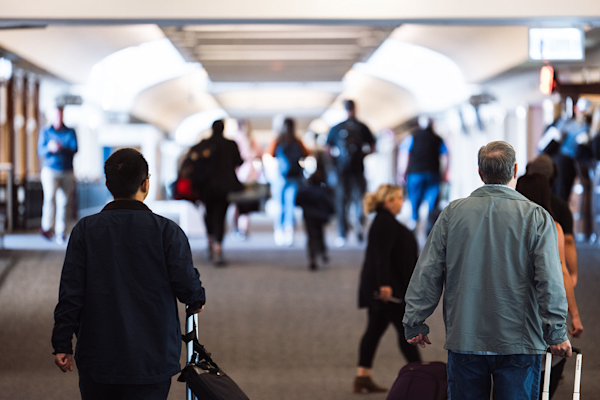 Nov 23, 2020
Nov 23, 2020The Lane Report: Thanksgiving Travel: CVG expects busy season, offers pandemic protocols
The Lane Report / November 20, 2020ERLANGER, Ky. – Airports and airlines across the country are working together to prepare for the holiday travel season. The Cincinnati/Northern Kentucky International Airport (CVG) expects November and December to be the busiest months for passenger traffic since the pandemic started with the more popular destinations being Florida, Arizona, Cancun, and the Rocky Mountain region.The busiest days for the Thanksgiving holiday will be Friday, Nov. 20; Tuesday, Nov. 24; Wednesday, Nov. 25; Saturday Nov. 28; Sunday, Nov. 29; and Monday, Nov. 30.“Passenger safety is our top priority as evidenced by our global health accreditation,” said Candace McGraw, chief executive officer, CVG. “We encourage passengers to visit our website which provides information, videos and links to resources for travelers to plan ahead to feel comfortable and confident when arriving at the airport.”Specific changes and updates passengers will see at CVG: Frequent cleaning and disinfecting of high-traffic areas and touchpoints including restrooms and handrails, and aircraft (which is done by the airlines). A new product enhancement at the airport is the use of SafetyNet, a two-step process that first applies an electrostatic disinfection followed up by an anti-microbial solution that binds to and protects surfaces for 30+ days. Plexiglass guards installed at ticketing counters, security checkpoint, concessions locations, and gate areas. More than double the number of hand sanitizer stations added throughout airport facilities. Friendly reminders for travelers to wear masks and social distance themselves from others.Travelers can read more updates and tips on the [Fly Healthy](https://cvgairport.com/flight/tips/flyhealthy/traveling-tips) section of CVGairport.com.CVG is currently the only airport in the region with direct service to Boston, Los Angeles, New Orleans, Jacksonville and Phoenix/Mesa (AZA) for the two holiday months (November/December). It offers several other nonstop flights, available [here](https://gcc01.safelinks.protection.outlook.com/?url=https%3A%2F%2Fwww.cvgairport.com%2Fnonstopdestinations&data=04%7C01%7Cmkershner%40cvgairport.com%7C4ca2401c4c6749e9753608d88bf854db%7C6a1858161bcc4c24b4487abfacd1c666%7C0%7C0%7C637413245987400279%7CUnknown%7CTWFpbGZsb3d8eyJWIjoiMC4wLjAwMDAiLCJQIjoiV2luMzIiLCJBTiI6Ik1haWwiLCJXVCI6Mn0%3D%7C1000&sdata=nI%2FXeNTYYNJRx0qkAxolmvJjNbL4%2Bofash4WLsItmqo%3D&reserved=0).[Full story here](https://www.lanereport.com/134339/2020/11/thanksgiving-travel-cvg-airport-expects-busy-season-offers-pandemic-protocols/)Read more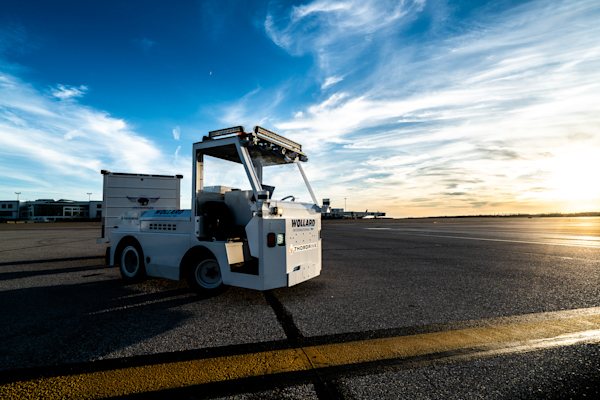 Nov 23, 2020
Nov 23, 2020Business Courier: Why this Silicon Valley startup moved here to test its driverless technology at CVG
Cincinnati Business Courier / Cincy Inno / Liz Engel / November 19, 2020For the better part of nine months, a former Silicon Valley startup has been testing its autonomous vehicle technology at the Cincinnati/Northern Kentucky International Airport.A small van, white, with various red markings, and outfitted with a suite of sensors and cameras, both on top of the vehicle and inside, has been navigating in and around the terminal for weeks, learning all the ins and outs, while a team behind the scenes makes ongoing improvements and tweaks.For the most part, that company has been quiet about its efforts.Until now.ThorDrive, which now calls Cincinnati home, is ready to make its debut. Eddie Shelton, ThorDrive’s vice president of business development, said the company expects to have proofs of concept in the next couple of weeks, and a pair of units ready for market by the end of 2021.ThorDrive’s roots are in Seoul, South Korea, but the startup first entered the U.S. market via Silicon Valley in 2018. It had varied success. It launched a last-mile delivery project for a few small businesses around Palo Alto, Calif., which marked its first test with commercial delivery vehicles, and the company overall logged about 80,000 miles of real-world on-the-road experience. It’s “very unheard of,” he said, for a company like ThorDrive to relocate here. But CVG has made a big play in recent years to loop in different innovative partners. In the past, it’s partnered with startups like Cincinnati’s Losant, TaskWatch in Mason and Wyzerr, which was recently acquired by Columbus-based PopCom.A proposal to partner with CVG also proved an interesting opportunity to pivot, Shelton said. The field for autonomous technology is flooded with well-funded companies looking to make driverless passenger cars and commercial trucks, Shelton said. There weren’t many playing in the aviation space.For ThorDrive, and CVG, this represents the first airport partnership of its kind. ThorDrive’s technology is applicable in many areas, mainly ground support equipment, or GSE, like airport baggage tugs, or carts, and offers cost efficiencies and improved safety. Brian Cobb, chief innovation officer at CVG, said ThorDrive’s biggest selling feature is that its technology can retrofit different types of equipment. “This is the future,” Brian Cobb, chief innovation officer at CVG. “There’s no airline out there that wants to consider getting rid of or phasing out its existing \[fleet\],” he said. “But if you tell me I can convert my existing frame? Now we’re talking.”Since February, ThorDrive has been testing its technology around the CVG campus. That access has been critical to development, Shelton said. A demo day on Thursday showcased what's been done so far.“Our technology can now recognize critical things that it will encounter while doing its job. It recognizes the aircraft and other vehicles,” Shelton said. “It’s programmed to know its route, to know where an intersection is, to stop and scan for any vehicles that might be crossing its path. We’ve had access to locations that no other company has had access to, and that has been the biggest catalyst for us getting to where we are.”[Full store here](https://www.bizjournals.com/cincinnati/inno/stories/news/2020/11/19/silicon-valley-startup-moves-hq-to-cincinnati-cvg.html?cx_testId=40&cx_testVariant=cx_6&cx_artPos=8#cxrecs_s) (subscription-based)Read more Nov 19, 2020
Nov 19, 2020CVG Airport partners with ThorDrive on driverless tech
Erlanger, Ky. (November 19, 2020) – As another first for CVG, [ThorDrive](http://www.thordrive.ai/) (headquartered in Cincinnati, Ohio), is bringing autonomous vehicle (AV) technology to the airport’s campus. Through a recently enacted airport ordinance, autonomous vehicles and equipment can now operate on airport property. The airport is positioning itself for the future by leaning into AV and other related technologies. This strategy enables trials of the technology in a live operating environment. By advancing AV technology, CVG has the added benefit of modeling for communities given its city-like infrastructure. The long-term benefits of AV include operational efficiencies and safety.ThorDrive began in Seoul, South Korea and entered the U.S. market in Silicon Valley. In 2019, it established its North American headquarters in Cincinnati, Ohio. ThorDrive is now invested in the region, contributing to workforce talent and advancement in transportation.“ThorDrive is a great innovation partner,” said Candace McGraw, chief executive officer, CVG. “Like our other startup, university, and corporate partners, ThorDrive injects talent, technology and economic growth into our campus and region to ensure CVG remains agile and well positioned as a leader in the airport industry.”“We are very pleased to be a partner as another CVG first mover,” said Dr. Seung-Woo Seo, Founder and Chairman of the Board of ThorDrive. Seo further added: “Together, ThorDrive and CVG will continue the airport’s stewardship to foster meaningful innovations. The catalyst of our growth and the development of our technology was a combination of talent available from local universities as well as the unwavering support from CVG.”FACT SHEET [here](/docs/default-source/news-items/thordrive-cvg-airport-fact-sheet2d3bebea-379a-41d3-ba28-cc2d74762324.pdf?Status=Master&sfvrsn=c1505715_3)Photo cutline: ThorDrive at CVG (Left to right): John Kim, ThorDrive; Andy Aiello, TANK; David Shuey, OKI; Mark Policinski, OKI; Candace McGraw, CVG Airport; Chris Lee, ThorDrive; Eddie Shelton, ThorDriveAbout CVG Airport:The Cincinnati / Northern Kentucky International Airport (CVG) welcomed more than 9.1 million passengers in 2019. Amidst the COVID-19 pandemic, CVG still offers the most nonstop destinations, and the lowest average airfares in the region. As the 7th largest cargo airport in North America and home to the Amazon Air Hub and DHL Express Global Superhub, CVG is diversified in both passenger and cargo operations, with an annual economic impact of $6.8 billion. Learn more about CVG and its response to COVID-19 at CVGairport.com/FlyHealthy. About ThorDrive:ThorDrive is an autonomous technology company with a mission to proliferate our technologies to new applications beyond the “traditional” passenger vehicle and commercial truck markets. Our focus is on markets where: Our full-stack development process and deep customer partnership not only support operational excellence and enhanced safety but also provide a strategic advantage to all stakeholders. A significantly abbreviated path to successful commercialization and much more efficient level of investment that will support the growth of ThorDrive and quickly provide an economic benefit to our customers and investors.ThorDrive is now headquartered in the Over-the-Rhine area of Cincinnati. [Link to YouTube](https://www.youtube.com/channel/UC0W0FYt6CNmGQzglqDGHPZw) channel. More info at [www.thordrive.ai](http://www.thordrive.ai/)Read more







